It's been 120 years since a wall was built around Taipei and the settlement was officially declared a city. In the intervening period, the city has been molded into a vibrant and lively center, with diverse sights, sounds and cultures that cannot be experienced anywhere else.
Taipei's city walls were built in November 1884 to defend against foreign intruders, after Japanese soldiers landed on the northern coast of Taiwan in 1874 following the Mutanshe incident (牡丹社事件), when a number of Okinawan seamen were killed three years earlier.
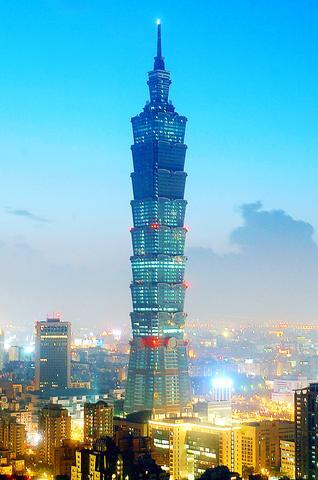
PHOTO: SEAN CHAO, TAIPEI TIMES
From 1875, construction of the walls and city took 10 years to complete under Qing dynasty official Shen Pao-zhen's (沈葆楨) supervision.
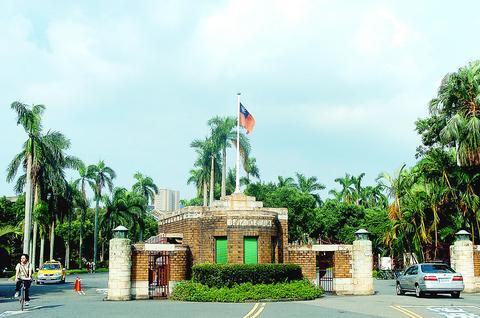
PHOTO: SEAN CHAO, TAIPEI TIMES
Four major city gates and a smaller one were built, instead of the planned eight gates due to a shortage of funds. The gates were named: Chingfu Gate (景福門) in the east, Paocheng Gate (寶成門) in the west, Licheng Gate (麗正門) in the south, and Chengen Gate (承恩門) in the north. The smaller gate on the south side of the city was named Chunghsi Gate (重熙門). Only the north gate Chengen survived the harsh test of time and remains intact to the present day.
The 5m-tall city walls were built into a rectangular shape, with a perimeter of 4.5km, and took about one and a half hours to walk around. The path around the wall was 4m wide, enough to accomodate two horses walking together. The walls were built on a "fengshui axis," planned according to the principles of geomancy.
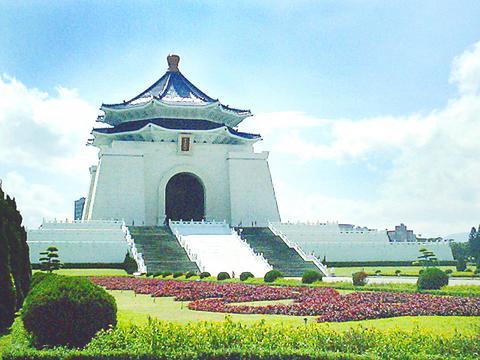
PHOTO: RANDY LEE, TAIPEI TIMES
Eleven years after their completion, the city walls were torn down by the occupying Japanese government, which took over from the Qing dynasty rulers, in 1895, and ruled for 50 years.
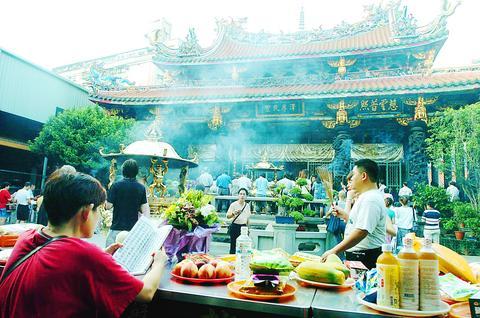
PHOTO: CHANG YING-YING, TAIPEI TIMES
The Chinese Nationalist Party (KMT) took control of Taiwan in 1945. Regrettably, three of the old city gates were demolished because of road expansion schemes in the last 20 years.
Taipei's 120 years of history are reflected in the city's buildings, temples, universities, churches and parks. Chiang Kai-shek Memorial Park (
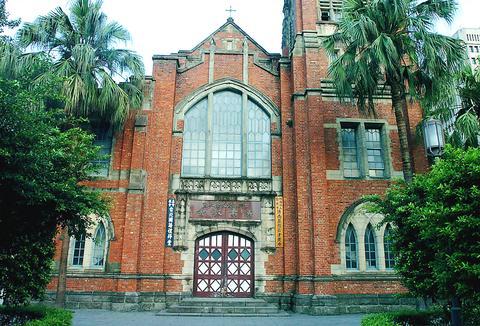
PHOTO: CHANG YING-YING, TAIPEI TIMES
The structures that first grab your attention, however, are the two national halls, which are enormous and highly decorated.
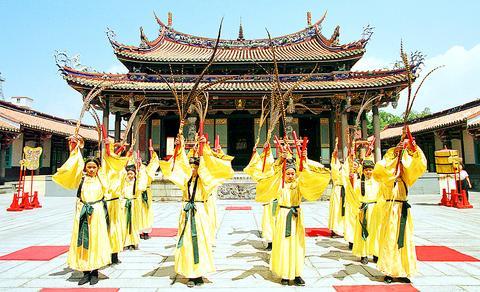
PHOTO: SEAN CHAO, TAIPEI TIMES
The nearby memorial hall stands out because of its elevated position and blocks out the homes and buildings in the surrounding area. The park itself is a breathtaking natural paradise and contains more than 500,000 trees.
National Taiwan University (NTU, 國立台灣大學) is 15 minutes by taxi from the memorial hall. It was first established by the Japanese in 1928, with two colleges and 60 students. It is now one of the largest universities in Taiwan -- and one of the most prestigious -- with nearly 3,000 professors, 30,000 students, 10 colleges, 52 departments and 82 graduate institutes.
Twenty minutes by car northwest of NTU is Lungshan (Dragon Mountain) Temple (
The painstaking restoration of the temple features ornate and rich decorations on its walls and pillars; and there are many lively, exquisite bronze, stone and wood carvings, with dragons on the rooftops.
After looking around Lungshan, one can travel east for 15 minutes to the red-brick built Chinan Church (
The Taipei Confucius Temple (台北孔廟) is 20 minutes northwest of the church and honors one of the greatest philosophers and teachers of all time, Confucius, who valued simplicity. This quality is echoed in the building of the temple. Here, there are no ornate decorations -- unlike other Taipei temples -- and no images of Confucius.
On the roof of the main hall of the temple, there are constructions that look like chimneys. These were used to hide books when the first emperor of the Qin Dynasty burned books and killed scholars in order to keep his subjects illiterate.
Confucius' birthday is celebrated in Taiwan as Teachers Day, on Sept. 28, when solemn ceremonies and ritual dances are performed at dawn.
Twenty-five minutes to the east of the Confucius Temple is the National Palace Museum (故宮博物院), which contains hundreds of thousands of antiques, literary works and paintings. Bronzes, ceramics, jades and miscellaneous objects are collected, restored and kept for posterity. Tapestries, calligraphies and paintings are also kept at the National Palace Museum, another fascinating place to visit.
At 508m, Taipei 101 (一零一摩天大樓) is now the tallest office building in the world. It takes about 20 minutes to get there from the National Palace Museum, but it can be seen from far away. Though construction isn't completed yet, the mall is open and has a cornucopia of first-class shops to visit and browse. Taipei 101 represents the fact that, today, Taiwan stands tall.
From the Taipei 101 to traditional temples, Taipei is filled with many interesting people and bountiful opportunities. Put together, all these landmarks, diverse cultures and unique experiences are pieces that form the giant and colorful puzzle that is Taipei today.

May 26 to June 1 When the Qing Dynasty first took control over many parts of Taiwan in 1684, it roughly continued the Kingdom of Tungning’s administrative borders (see below), setting up one prefecture and three counties. The actual area of control covered today’s Chiayi, Tainan and Kaohsiung. The administrative center was in Taiwan Prefecture, in today’s Tainan. But as Han settlement expanded and due to rebellions and other international incidents, the administrative units became more complex. By the time Taiwan became a province of the Qing in 1887, there were three prefectures, eleven counties, three subprefectures and one directly-administered prefecture, with

It’s an enormous dome of colorful glass, something between the Sistine Chapel and a Marc Chagall fresco. And yet, it’s just a subway station. Formosa Boulevard is the heart of Kaohsiung’s mass transit system. In metro terms, it’s modest: the only transfer station in a network with just two lines. But it’s a landmark nonetheless: a civic space that serves as much more than a point of transit. On a hot Sunday, the corridors and vast halls are filled with a market selling everything from second-hand clothes to toys and house decorations. It’s just one of the many events the station hosts,
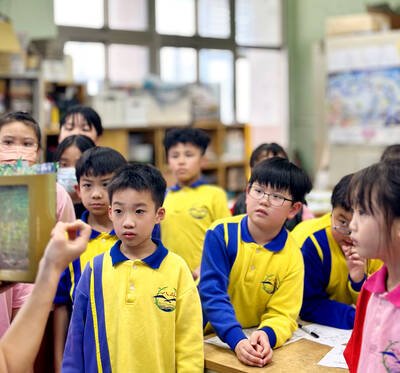
Through art and storytelling, La Benida Hui empowers children to become environmental heroes, using everything from SpongeBob to microorganisms to reimagine their relationship with nature. “I tell the students that they have superpowers. It needs to be emphasized that their choices can make a difference,” says Hui, an environmental artist and education specialist. For her second year as Badou Elementary’s artist in residence, Hui leads creative lessons on environmental protection, where students reflect on their relationship with nature and transform beach waste into artworks. Standing in lush green hills overlooking the ocean with land extending into the intertidal zone, the school in Keelung

Taiwan Power Co (Taipower, 台電) and the New Taipei City Government in May last year agreed to allow the activation of a spent fuel storage facility for the Jinshan Nuclear Power Plant in Shihmen District (石門). The deal ended eleven years of legal wrangling. According to the Taipower announcement, the city government engaged in repeated delays, failing to approve water and soil conservation plans. Taipower said at the time that plans for another dry storage facility for the Guosheng Nuclear Power Plant in New Taipei City’s Wanli District (萬里) remained stuck in legal limbo. Later that year an agreement was reached